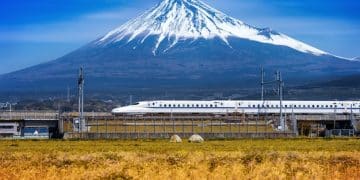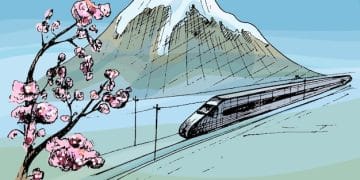Japan Public Transportation: US Visitors Guide to Mastering Travel
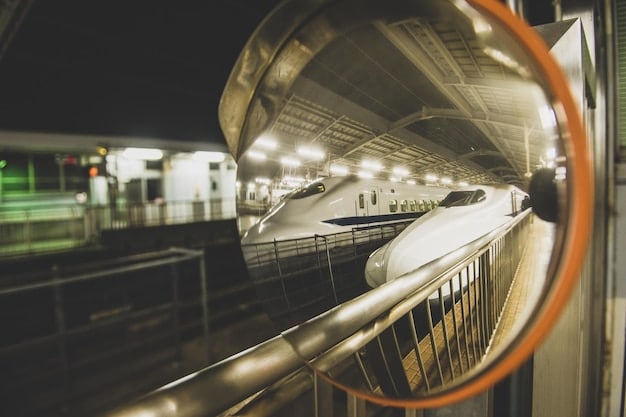
Mastering Japan’s Public Transportation is essential for US visitors, offering a comprehensive guide to navigate trains, subways, buses, and shinkansen with ease, ensuring a smooth and efficient travel experience.
Navigating Japan’s extensive public transportation system can seem daunting for first-time US visitors. This comprehensive guide, **Mastering Japan’s Public Transportation: A Comprehensive Guide for US Visitors**, will equip you with the knowledge and confidence to explore Japan like a local.
Understanding Japan’s Transportation Network
Japan boasts one of the most efficient and comprehensive public transportation systems in the world. From sprawling urban metros to cutting-edge bullet trains, understanding the basics is key to seamless travel.
Types of Transportation
Japan offers a variety of transportation options, each suited to different needs and distances.
- Trains: The backbone of Japanese transport, ranging from local lines to the high-speed Shinkansen.
- Subways: Essential for navigating large cities like Tokyo and Osaka.
- Buses: Useful for reaching more remote areas and sometimes within cities.
- Shinkansen (Bullet Train): The iconic high-speed rail, perfect for long-distance travel.
Knowing which mode to use when will save you time and money. The Shinkansen, while faster and more comfortable, is more expensive than local trains or buses.
Key Terminology
Familiarizing yourself with common transportation terms will make your journey much smoother.
Understanding these core concepts will greatly enhance your ability to navigate Japan’s transit system. It’s also worth downloading a translation app on your phone, just in case.
In conclusion, Japan’s transportation network is diverse and efficient. By understanding the different types of transport available and key terminology, US visitors can greatly enhance their travel experience.
Purchasing Tickets and Passes
One of the initial hurdles for US visitors is understanding how to purchase tickets and passes. Japan offers several options, catering to different travel styles and durations.
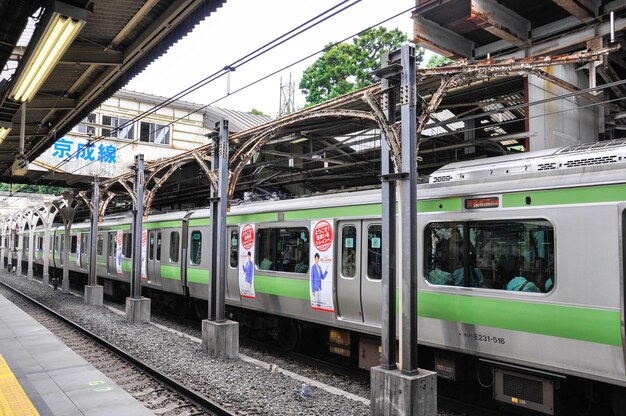
Japan Rail Pass
The Japan Rail Pass (JR Pass) is a cost-effective option for tourists planning extensive travel across Japan using the JR network.
- Eligibility: Available to foreign tourists visiting Japan for sightseeing purposes.
- Coverage: Valid on most JR trains, buses, and ferries nationwide.
- Cost: Varies depending on the duration (7, 14, or 21 days) and class (Ordinary or Green Car).
Consider purchasing the JR Pass if you plan to visit multiple regions. However, calculate whether the cost justifies the trips you intend to take.
Individual Tickets
For shorter trips or travel within a specific city, individual tickets are a practical choice.
- Purchasing Methods: Available at ticket vending machines or staffed ticket counters in stations.
- IC Cards: Prepaid cards like Suica and Pasmo simplify travel in major cities; can be used on most trains and buses.
- Seat Reservations: Recommended for Shinkansen travel, especially during peak seasons.
IC cards are incredibly convenient for daily commuting and can also be used for purchases at many convenience stores.
In conclusion, purchasing tickets and passes in Japan is relatively straightforward, with options catering to various travel needs and durations. Consider the JR Pass for extensive travel and individual tickets or IC cards for shorter trips.
Navigating Train Stations and Platforms
Japanese train stations can be bustling hubs, but they are generally well-organized and easy to navigate with a bit of preparation.
Station Layout
Japanese train stations are designed for efficiency, with clear signage and intuitive layouts.
- Signage: English signage is widely available, especially in major stations.
- Information Desks: Staffed information desks can provide assistance in English.
- Platform Numbers: Clearly marked and displayed in multiple locations.
Don’t hesitate to ask for help; station staff are usually very helpful and accommodating.
Boarding Etiquette
Japanese culture places a strong emphasis on politeness and orderliness, which extends to train travel.
When waiting for your train, form an orderly queue at the designated platform markings. Avoid talking loudly on your phone on the train and refrain from eating smelly foods out of consideration for other passengers.
In conclusion, navigating Japanese train stations is manageable with some familiarity. Pay attention to signage, follow boarding etiquette, and don’t hesitate to ask for assistance if needed.
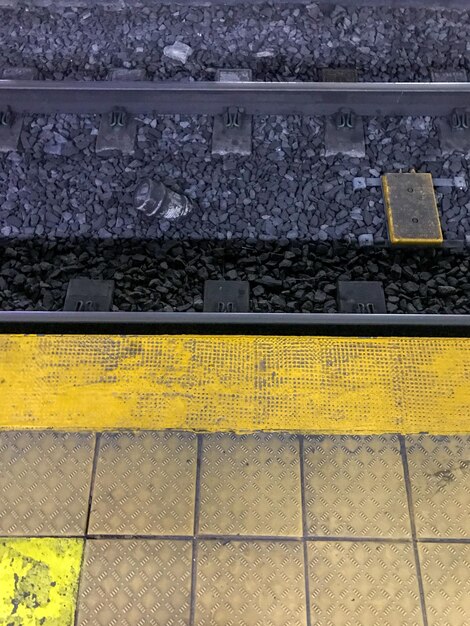
Riding the Shinkansen (Bullet Train)
The Shinkansen is a symbol of Japan’s technological prowess and offers a supremely efficient and comfortable way to travel long distances.
Benefits of the Shinkansen
The Shinkansen offers speed, comfort, and reliability, making it an excellent choice for traveling between cities.
- Speed: Reaches speeds of up to 320 km/h (200 mph).
- Comfort: Offers spacious seating, ample legroom, and onboard amenities.
- Punctuality: Known for its precise schedules and minimal delays.
The Shinkansen is a fantastic way to experience Japan’s countryside while traveling in style and comfort.
Making Reservations
Reserving seats on the Shinkansen is highly recommended, especially during peak travel seasons.
Seat reservations can be made online, at ticket counters, or through automated kiosks. Specify your destination, date, and preferred seating option to secure your reservation.
In conclusion, riding the Shinkansen is an integral part of the Japanese travel experience. Its speed, comfort, and punctuality make it an excellent option for long-distance travel. Making reservations in advance is advisable.
Using Local Buses and Subways
While trains are central to Japan’s transportation system, local buses and subways are crucial for navigating within cities and reaching less accessible areas.
Local Buses
Local buses are essential for reaching areas not covered by trains or subways.
In most Japanese cities, you board local buses from the rear and exit from the front, paying the fare upon exiting. IC cards can be used to pay fares on most buses, simplifying the process.
Local buses offer a scenic way to explore smaller towns and cities, providing access to areas often overlooked by tourists.
Subways in Major Cities
Subways are essential for efficiently navigating major cities like Tokyo, Osaka, and Kyoto.
- Route Maps: Subway maps are usually available in English and clearly display route information.
- Transfer Stations: Well-signed and easy to navigate, even during rush hour.
- Frequency: Trains run frequently, especially during peak hours.
Subways are a convenient and cost-effective way to travel throughout large cities, providing rapid transit to countless locations.
In conclusion, local buses and subways are indispensable for navigating within Japanese cities and reaching areas not accessible by train. Using IC cards and understanding basic routes will enhance your urban exploration.
Tips for a Smooth Transportation Experience
To make your experience truly seamless, here are some additional tips.
Language Barriers
While English signage is common, knowing some basic Japanese phrases can be helpful.
Learning phrases such as “sumimasen” (excuse me), “arigato” (thank you), and “doko desu ka” (where is…?) can enhance your interactions with locals and make navigation easier.
Staying Connected
Having access to the internet is invaluable for real-time navigation and translation.
Consider renting a pocket Wi-Fi device or purchasing a local SIM card. Navigation apps like Google Maps and Japan Transit Planner can provide up-to-date schedule information and route guidance.
Respecting Local Customs
Japanese culture emphasizes politeness and consideration for others.
Avoid talking loudly on your phone, eating and drinking on the train during peak hours, and ensure your luggage doesn’t obstruct other passengers.
In conclusion, keeping these tips in mind will ensure a smoother and more enjoyable transportation experience while traveling in Japan. Basic Japanese phrases, reliable internet access, and respect for local customs are key to seamless navigation.
| Key Point | Brief Description |
|---|---|
| 🚄 Shinkansen | High-speed bullet train for efficient long-distance travel. |
| 🎫 Japan Rail Pass | Cost-effective pass for extensive JR network travel. |
| 📱 IC Cards (Suica/Pasmo) | Prepaid cards for easy payment on trains and buses. |
| 🚏 Local Buses | Access areas not served by trains; board from the rear. |
Frequently Asked Questions
▼
The Japan Rail Pass is cost-effective if you plan to travel extensively across Japan using JR lines. Calculate your potential travel costs to determine if the pass is financially beneficial.
▼
You can reserve seats at ticket counters, automated kiosks, or online through the JR website. Reservations are highly recommended, especially during peak travel seasons and holidays.
▼
Yes, most IC cards like Suica and Pasmo are interoperable across major cities in Japan. They can be used on trains, subways, and buses where the IC card symbol is displayed.
▼
Look for information desks; most major stations have staffed desks with English-speaking personnel. Alternatively, follow the English signage or use a translation app for assistance.
▼
Yes, many train stations offer coin lockers and luggage storage services. These are generally available in various sizes to accommodate different luggage types. Larger stations may also have staffed luggage storage counters.
Conclusion
Mastering Japan’s public transportation provides US visitors with the freedom and flexibility to explore this fascinating country with ease. With a little planning and understanding, navigating Japan’s efficient system can become an enjoyable part of your travel experience.

